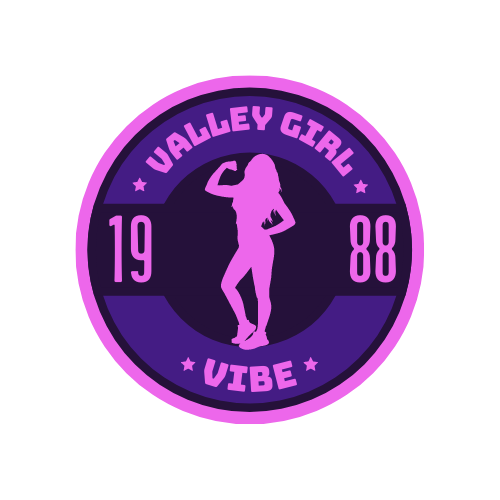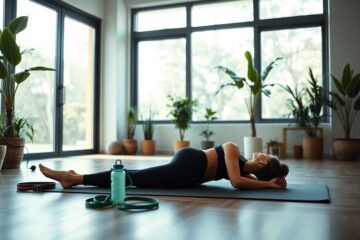You may be surprised to learn that the way you move your body can significantly impact your overall well-being. Engaging in various forms of movement, from exercise to simple stretching, can lead to enhanced physical health, improved mental clarity, and emotional balance. When you allow the serendipitous interplay of movement to occur naturally, you open up pathways for holistic wellness that affect both your body and mind. In this blog post, we will explore how you can harness this interaction to elevate your well-being and foster a more vibrant life.
Key Takeaways:
- Integrating spontaneous movement into daily routines can boost mood and reduce stress through the release of endorphins.
- Mindful movement practices, such as dance or yoga, foster connection between the body and mind, promoting overall emotional and physical health.
- Exploring new activities or settings for movement can enhance creativity and open up pathways for positive life changes.
Understanding Movement
While you may often take movement for granted, it plays a significant role in your overall well-being. Engaging in movement, whether through everyday activities or structured exercises, can enhance your physical health, emotional stability, and mental clarity. By recognizing the different dimensions of movement, you can optimize your daily routines and cultivate a more holistic approach to well-being.
The Science of Movement
To appreciate the benefits of movement, you must understand its biological and psychological underpinnings. Movement stimulates the release of endorphins, promoting feelings of happiness and reducing stress. It also enhances circulation and boosts cognitive function, allowing you to experience life more fully.
Types of Movement
By categorizing the various ways you can move, you can easily incorporate them into your daily life. Here are some types of movement to consider:
- Cardiovascular exercises
- Strength training
- Flexibility routines
- Functional movements
- Recreational activities
The incorporation of these movements can greatly enhance your physical and mental health.
| Type of Movement | Benefits |
| Cardiovascular exercises | Improves heart health |
| Strength training | Builds muscle and bone density |
| Flexibility routines | Enhances range of motion |
| Functional movements | Increases daily activity performance |
| Recreational activities | Boosts social interaction and joy |
Understanding these different types of movement enables you to choose activities that fit your lifestyle and goals. Engaging in various movements not only keeps your routine fresh but also provides comprehensive benefits to your body and mind. Here’s a closer look at each category:
- Cardiovascular exercises include activities like walking, running, and cycling.
- Strength training can involve weights or bodyweight exercises.
- Flexibility routines often consist of stretching and yoga practices.
- Functional movements replicate everyday tasks, enhancing your physical capabilities.
- Recreational activities encourage play and leisure, fostering joy in movement.
The diversity of movement contributes to a more fulfilling and balanced lifestyle.
| Benefits of Movement | Impact on Well-being |
| Improved mood | Enhances overall happiness |
| Increased energy | Boosts daily productivity |
| Enhanced focus | Improves mental clarity |
| Weight management | Promotes physical health |
| Social connections | Encourages community and belonging |
Serendipity in Movement
One of the most enriching aspects of movement is its ability to lead us toward unexpected discoveries. When you embrace the serendipitous interplay of movement, you open yourself up to new experiences and insights that can enhance your overall well-being. Instead of rigidly adhering to a routine, allowing spontaneity in your physical activities can rejuvenate your mind and body, fostering a sense of joy and curiosity that deeply nourishes your spirit.
What is Serendipitous Movement?
By definition, serendipitous movement refers to engaging in physical activities that arise unexpectedly or without premeditation. This might involve taking an unplanned walk, trying out a new dance style, or exploring a different route during your daily run. These moments can stir joy and creativity, offering refreshing surprises that enrich your routine and positively impact your well-being.
The Role of Unplanned Activities
To fully grasp the benefits of unplanned activities in movement, consider how they encourage you to step outside your comfort zone. You may stumble upon new perspectives, experiences, and social interactions that lead to personal growth and enhanced creativity.
Due to their spontaneous nature, unplanned activities encourage you to be open to new experiences, which can lead to surprising connections and a sense of adventure. For instance, taking an impromptu dance class or hiking a new trail may introduce you to people who inspire and motivate you. These moments not only invigorate your physical fitness but also enhance your emotional well-being, allowing you to cultivate a rich, fulfilling life filled with joy and exploration.
The Interplay of Movement and Well-Being
After engaging in various forms of movement, you might notice an uplifting shift in your overall well-being. The synergy between physical activity and mental health is profound, creating a positive feedback loop. As you incorporate movement into your daily routine, you experience not just enhanced fitness, but also a deeper sense of fulfillment and joy in your life. This interplay supports your body and mind, making you feel more connected to yourself and your environment.
Physical Benefits
Below are some notable physical benefits of movement: improved cardiovascular health, enhanced strength and flexibility, and better balance. Regular physical activity boosts your immune system, increases energy levels, and contributes to healthier sleep patterns. By prioritizing movement, you’re not just shaping your body; you’re investing in a healthier, longer life.
Mental and Emotional Benefits
By engaging in movement regularly, you can significantly improve your mental and emotional well-being. Increased physical activity releases endorphins, often referred to as “feel-good” hormones, which can help reduce feelings of stress and anxiety. Additionally, as you move your body, you might find clarity in your thoughts and an enhancement in your mood, leading to a more positive outlook on life.
Physical activity also plays a vital role in your mental health. It fosters social connections when done in groups, creating a sense of belonging. As you engage in movement, you may discover an opportunity for mindfulness; being present during activities such as dancing or yoga can enhance your mental resilience. These elements contribute to a balanced emotional state and can greatly reduce symptoms of depression and anxiety.
Enhancing Daily Life Through Movement
Once again, integrating movement into your daily life can elevate your well-being significantly. Whether it’s a brisk walk during lunch or stretching between tasks, these simple actions can boost your mood and productivity. By incorporating movement regularly, you create opportunities for joy and discovery. Each moment spent being active fosters mental clarity and physical vitality, making every day a little brighter.
Incorporating Movement into Routine
With a few intentional adjustments, you can easily weave movement into your daily routine. Consider setting reminders to stand, stretch, or take a short walk every hour. You might also integrate movement into familiar activities, such as choosing to walk or bike instead of driving. These small changes can make a significant impact on your overall health and happiness.
Mindfulness and Movement Practices
Across various movements, there lies the potential for mindfulness that refreshes both the mind and body. Engaging in practices like yoga or tai chi helps you connect with your breath and body in the present moment, promoting relaxation and stress relief.
Plus, integrating mindfulness with movement allows you to truly experience each motion as a form of meditation. It encourages you to focus on your bodily sensations, fostering a deeper connection to your physical self. Consider dedicating time to slow-paced activities that require your full attention, enhancing your mental awareness while also keeping you physically engaged. This not only helps you become more present but also enhances your overall well-being.

The Social Aspect of Movement
Your journey towards enhancing well-being through movement is not just a solitary endeavor; it’s also a communal experience. Engaging in physical activities alongside others fosters connections, promotes a sense of belonging, and cultivates supportive networks. Whether it’s joining a local running club or participating in a community yoga session, the social aspect of movement enriches your life. These shared experiences create lasting bonds, deepen relationships, and contribute to a more fulfilling and balanced lifestyle.
Community and Connection
Aspect of movement emphasizes the power of shared experiences. By participating in group exercises or community sports, you immerse yourself in a vibrant network of individuals who share similar goals and interests. This not only helps to motivate you but also creates opportunities for friendship and support. Being part of a community can greatly enhance your commitment, making movement a joyful and engaging part of your daily routine.
Group Activities and Their Impact
Between individual workouts and communal exercises, the latter often brings a unique energy that can enhance your overall experience. Engaging in group activities not only motivates you to push yourself further but also allows you to celebrate achievements together. This shared enthusiasm can lead to an uplifting environment, where the collective energy boosts your mood and encourages you to continue participating. Regular involvement in group activities can also improve your social skills and reduce feelings of isolation, contributing positively to your mental and emotional health.
The benefits of group activities extend beyond motivation; they can also enhance mental well-being. Participating in team sports or group classes fosters a sense of belonging, which can significantly reduce anxiety and depression. You often find solace in shared experiences, as laughter and conversation create a supportive atmosphere. This engagement promotes healthy relationships and combats loneliness, making physical movement an integral part of a thriving social life. Ultimately, the social connections formed through group activities play a fundamental role in your overall well-being, enriching your experience and encouraging a balanced lifestyle.
Overcoming Barriers to Movement
To enhance your well-being through movement, it’s important to identify and overcome barriers that may hinder your physical activity. Many individuals face obstacles such as time constraints, lack of motivation, or even physical limitations. By acknowledging these challenges, you can take proactive steps to integrate movement into your daily life, fostering a more enriching experience.
Common Challenges
Common barriers to movement include busy schedules, limited access to facilities, and personal disinterest. These challenges can create a false perception that staying active is impossible or burdensome. Recognizing these hurdles is the first step towards finding solutions that can make movement more accessible and enjoyable for you.
Strategies for Encouragement
Between technology and community, there are numerous ways to encourage yourself to stay active. Utilizing apps for tracking progress, joining local groups, or engaging in social activities that incorporate movement can help you remain motivated. It’s about finding what resonates with you and creating an environment that inspires movement in a fun and meaningful way.
Indeed, integrating movement into your routine doesn’t have to feel daunting. Explore apps that offer guided workouts or join a local class to connect with like-minded individuals. Setting achievable goals, celebrating small victories, and surrounding yourself with positive influences can make your journey towards increased activity more enjoyable. Consider inviting friends or family to join you; sharing the experience can turn it into a joyful and supportive endeavor! Do not forget, the key is to find what works best for you and to make movement a natural part of your lifestyle.
Final Words
To wrap up, the serendipitous interplay of movement can significantly enhance your well-being by promoting physical health, improving mental clarity, and fostering emotional balance. Engaging in various forms of movement not only revitalizes your body but also provides opportunities for joyful experiences that enrich your daily life. By incorporating mindful movement practices into your routine, you cultivate a greater connection to yourself and the world around you, ultimately leading to increased fulfillment and joy in your daily activities.





